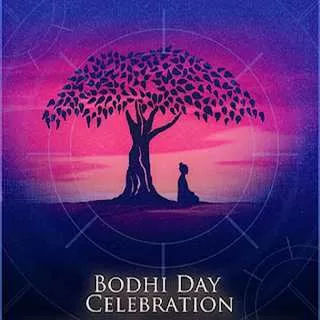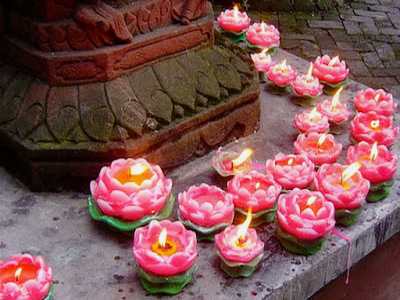Table of Contents
Bodhi Day
Bodhi Day, also known as Buddha’s Enlightenment Day, marks the profound moment when Siddhartha Gautama achieved enlightenment approximately 2,600 years ago, ultimately transforming into the revered Buddha. This significant Buddhist observance commemorates the day Siddhartha Gautama, a prince, sat beneath the Bodhi tree and attained enlightenment.
Undoubtedly, the enlightened Siddhartha metamorphosed into the revered Buddha!
Commonly referred to as peepal, sacred fig, or Ficus religiosa, the Bodhi tree played a role in this transformative event. Although it may not be the direct cause of enlightenment, Siddhartha’s deliberate decision to engage in hours of meditation beneath its branches unveiled the root of human suffering and the path to liberation.
Bodhi Day manifests in diverse dates, names, and customs across cultures. However, it is most frequently observed on the 8th day of the 12th lunar month in the Chinese calendar. In Japan, the celebration known as Rōhatsu is steadfastly observed on December 8, aligning with the Japanese preference for fixed holiday dates.
Interestingly, the name “Bodhi” has experienced a sudden surge in popularity in the U.S. It symbolizes “awakened” or “enlightenment,” reflecting the essence of the Bodhi Day celebration.

Life of Siddhartha Gautama
Siddhartha Gautama, commonly known as the Buddha, left an indelible mark on the world with his profound spiritual journey. Born around 563 BCE in Lumbini (now in Nepal), Siddhartha’s life was destined for greatness and enlightenment.
Early Life and Royal Upbringing:
Siddhartha was born into the Shakya dynasty as the son of King Suddhodana and Queen Maya. His birth was accompanied by auspicious signs, foretelling his extraordinary destiny. Raised in the lap of luxury, Siddhartha lived a sheltered life within the palace walls, shielded from the harsh realities of the outside world.
The Four Sights:
At the age of 29, Siddhartha’s life took a transformative turn when he ventured beyond the palace grounds. Witnessing the profound impact of old age, sickness, death, and finally, a wandering ascetic, Siddhartha was deeply moved. These encounters stirred a longing within him to seek a deeper understanding of the human condition and the nature of suffering.
Renunciation and the Search for Truth:
Driven by an inner quest, Siddhartha renounced his princely status and embarked on a spiritual journey. He studied under various renowned teachers and embraced ascetic practices, yet none provided the answers he sought. Determined, he delved into rigorous meditation, vowing not to rise until he found enlightenment.
The Enlightenment Beneath the Bodhi Tree:
After six years of intense spiritual practice, Siddhartha chose to meditate beneath the Bodhi tree in Bodh Gaya. On the night of the full moon in May, he attained enlightenment. This profound awakening revealed the Four Noble Truths and the Eightfold Path, forming the foundation of Buddhism.
Teaching and Formation of Sangha:
The Buddha spent the next 45 years of his life disseminating his teachings, known as the Dharma, to a diverse audience. He formed a community of followers, known as the Sangha, and traveled extensively, leaving an indelible impact on the spiritual landscape of ancient India.
Parinirvana:
Siddhartha Gautama’s earthly journey concluded at the age of 80 in Kushinagar. This event, known as Parinirvana, signifies the final release from the cycle of rebirth. The Buddha’s teachings, encapsulated in the Tripitaka, continue to guide millions on the path to enlightenment.
Siddhartha Gautama’s biography is a testament to the transformative power of spiritual awakening and the timeless relevance of his teachings in the quest for inner peace and enlightenment.
FAQs:
What is Bodhi Day?
Bodhi Day, also recognized as Buddha’s Enlightenment Day, marks the moment when Siddhartha Gautama attained enlightenment, evolving into the Buddha.
How did Siddhartha Gautama achieve enlightenment?
Siddhartha Gautama achieved enlightenment by sitting beneath the Bodhi tree in deep meditation, uncovering the root of human suffering.
What are the alternative names for the Bodhi tree?
The Bodhi tree is also known as peepal, sacred fig, or Ficus religiosa.
When is Bodhi Day commonly celebrated?
Bodhi Day is most commonly celebrated on the 8th day of the 12th lunar month in the Chinese calendar. In Japan, it is celebrated as Rōhatsu on December 8.
Why has the name “Bodhi” gained popularity in the U.S.?
The name “Bodhi” has gained popularity in the U.S. due to its meaning, signifying “awakened” or “enlightenment.”
Recommended External Link:
The Meaning of Bodhi Day – Exploring Buddhist Enlightenment – Exploring Buddhist Enlightenment

